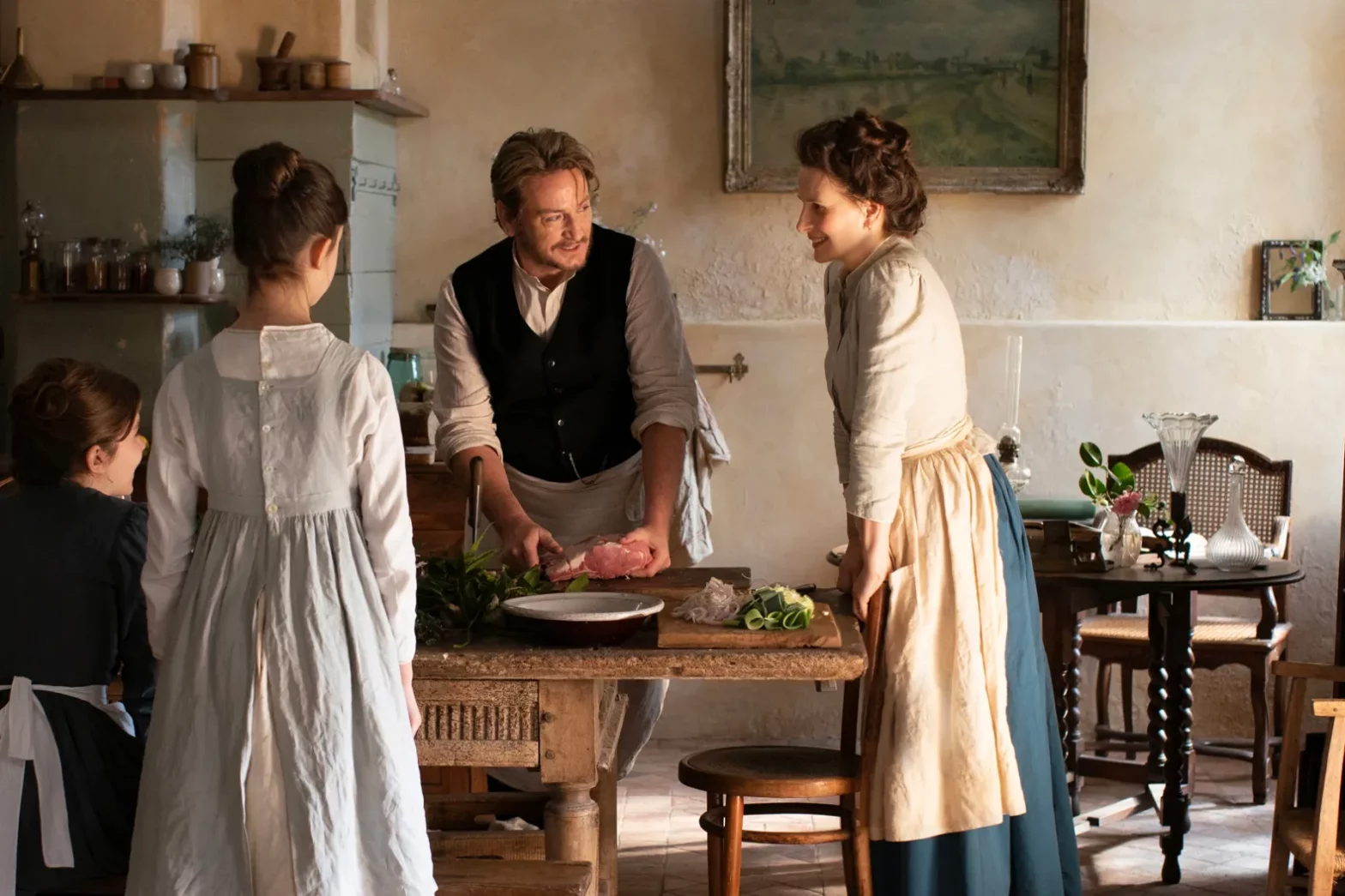In the sumptuous world of Tran Anh Hung’s ‘The Taste of Things,’ culinary artistry becomes the language of love and longing. Set in the picturesque French countryside of 1889, the film unfolds within the walls of a beautiful manor, where soft-spoken chef Eugénie (Juliette Binoche) orchestrates culinary symphonies alongside her employer and sometimes-lover, Dodin (Benoît Magimel), known as “the Napoleon of gastronomy.”
But this isn’t just a tale of romance; it’s a love story told through the meticulous preparation of meals. “I’ll converse with you in the dining room through what you eat,” Eugénie whispers, capturing the essence of her connection with Dodin. Their intimacy isn’t found in shared words at the dinner table but in the quiet magic of the kitchen.
Tran Anh Hung’s lens invites us into this world with breathtaking detail. From the sizzle of vegetables in a sauté pan to the delicate gutting of a fish, every movement in the kitchen is a choreographed dance of passion and precision. As Dodin crafts elaborate feasts, each dish becomes a stanza in a romantic poem, served with the reverence of a sacrament.
But amidst the culinary splendor lies a poignant subplot, foreshadowed throughout the film. Despite the sensual delights of food, tragedy lurks, reminding us of life’s bitter undertones.
Yet, for all its melancholy, ‘The Taste of Things’ is a celebration of food’s sensory pleasures and the profound connections it fosters. It’s a love letter to gastronomy, where each meal is imbued with meaning beyond mere sustenance.
Tran Anh Hung’s masterful direction ensures that every frame is imbued with sensuality. The camera caresses each ingredient and each gesture in the kitchen, inviting us to partake in the feast with all our senses. From the aroma of freshly baked pastries to the sight of a perfectly plated dish, the film tantalizes us, leaving us hungry for more.
Yet, beyond its culinary prowess, ‘The Taste of Things’ is ultimately a testament to the enduring power of love and artistry. In Eugénie and Dodin’s shared passion for food, we find a profound connection that transcends words—a reminder that sometimes, the most meaningful conversations happen in the quiet moments between bites.
At nearly 30 minutes, the film’s opening sequence is a mesmerizing ode to gastronomic indulgence. As Dodin and Eugénie and their assistants meticulously prepare a lavish feast, we’re drawn into their world, where each ingredient is a brushstroke in a culinary masterpiece.
But “The Taste of Things” is more than just visual poetry; it’s a sensory journey that engages all aspects of our being. As we watch Dodin and Eugénie navigate the kitchen with the grace of seasoned dancers, we can almost taste the flavors, smell the aromas, and feel the textures of their creations.
In one particularly poignant scene, Dodin prepares a meal for Eugénie, who sits alone in the dining room, savoring each course like a love letter from her paramour. It’s a moment of quiet intimacy, where food becomes a conduit for emotion, bridging the gap between two souls.
Throughout the film, Tran Anh Hung eschews traditional narrative conventions in favor of a more sensory approach, allowing the sights, sounds, and textures of food to tell the story. From the gentle rustle of a pastry to the crackle of a roasting fire, every sound is a symphony, every image a masterpiece.
And while ‘The Taste of Things’ may not offer the same visceral thrills as a traditional action-packed blockbuster; its quiet beauty and emotional depth linger long after the credits roll. In an age of sensory overload, Tran Anh Hung reminds us of the power of simplicity, of the joy that can be found in a perfectly cooked meal shared with loved ones.
Ultimately, ‘The Taste of Things’ is more than just a film; it’s an experience—a feast for the senses that leaves us craving more.
